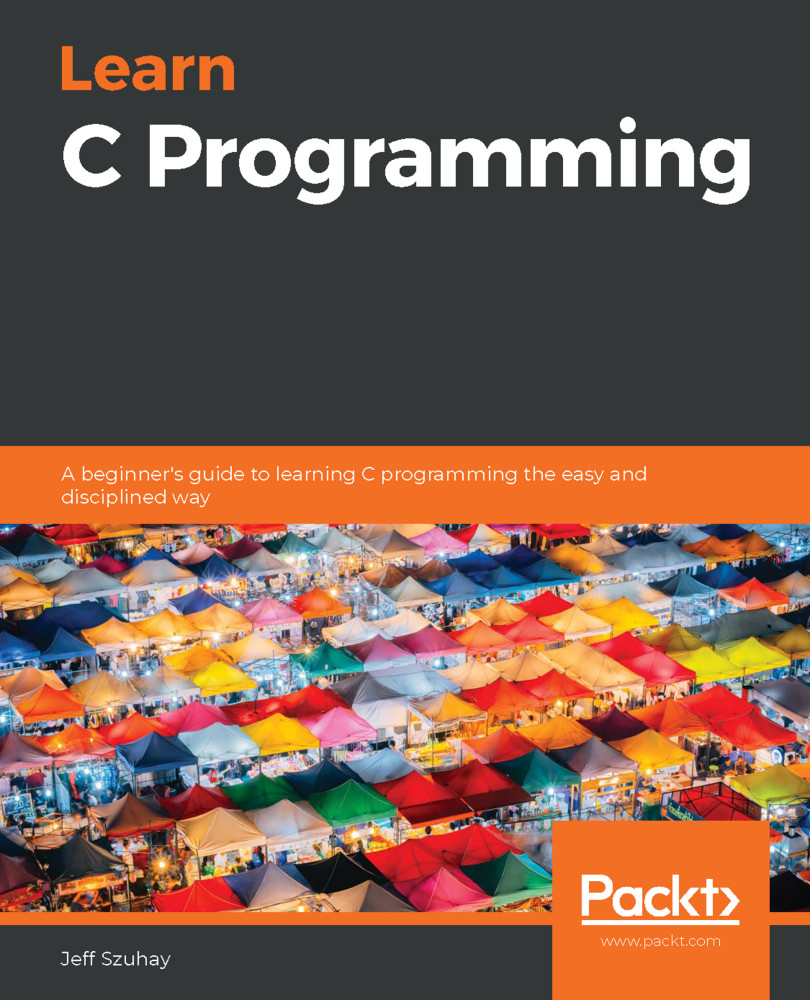In previous chapters, all the input was provided within each program and all the output was sent in rather simple forms to the console (screen). In this chapter, we will expand on more sophisticated output formatting. However, what if we need a precise layout of numbers and text? We saw in Chapter 15, Working with Strings, how to precisely generate a table of ASCII characters. With full knowledge of the possibilities of output formatting, very precise tables of numbers can be created. Furthermore, other kinds of precisely formatted documents can be generated, such as invoices, product price lists, and many others.
The C printf() function provides a rich set of formatting options, far beyond what we have used up to this point. We can format numbers—both integers and decimal numbers—characters, and strings in many ways. In this chapter, we will explore, primarily through examples...


